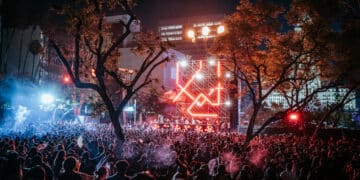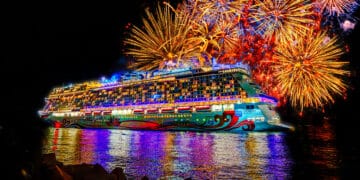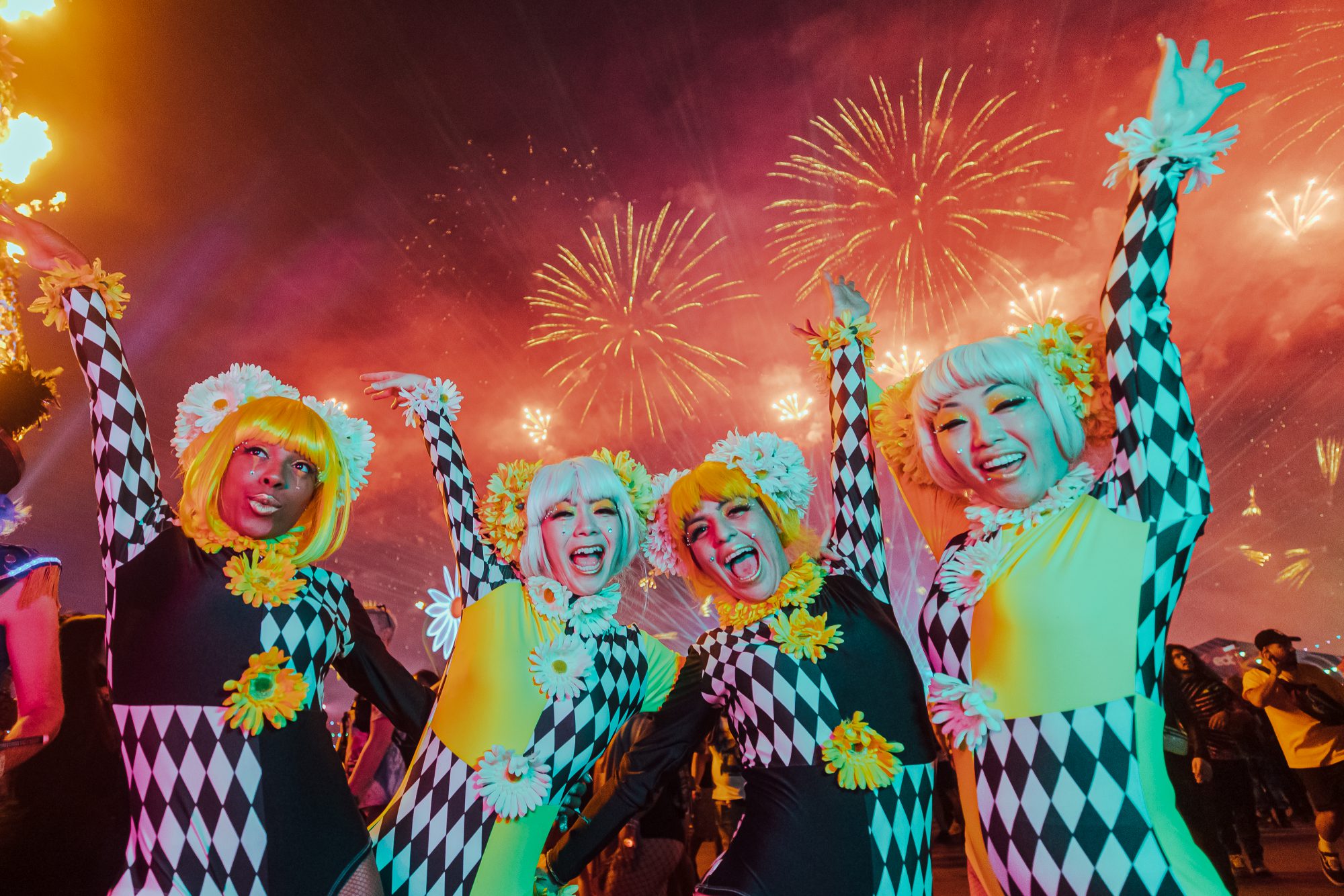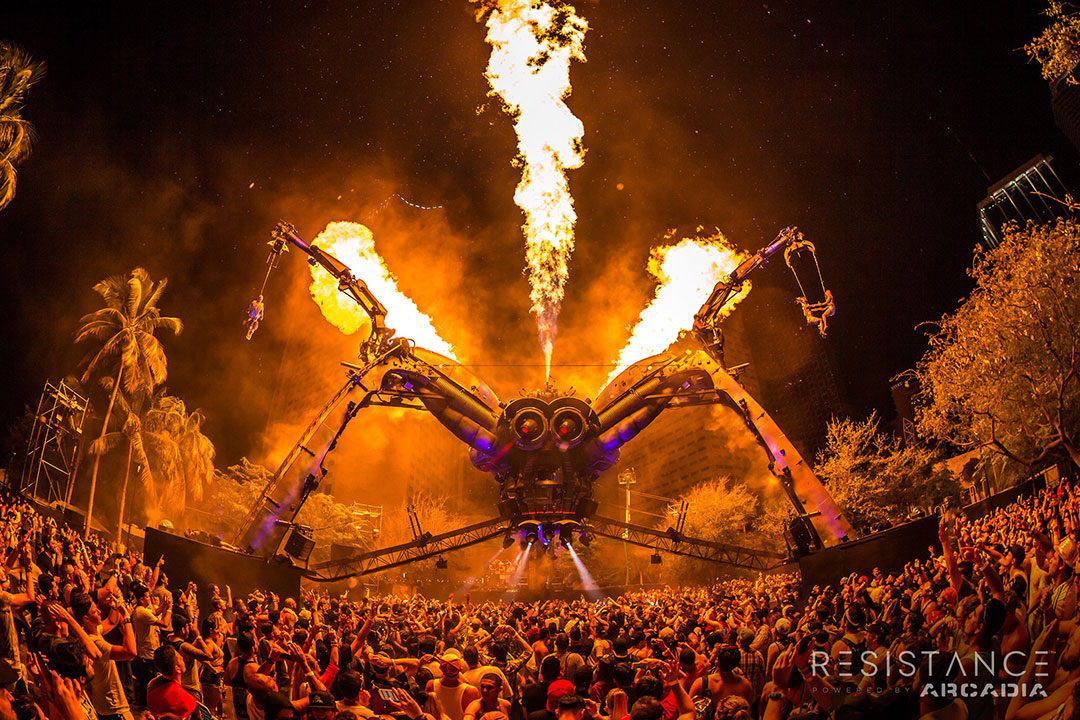While everyone in the scene talks about the music, the production, or the attendees that go to events, something that has been largely seen as taboo over the years has been the prevalence of drugs in this scene. A favorite topic among those looking to ban events, newscasters looking for stories, and those who do not truly understand the scene, I am personally tired of hearing the same old headlines and attitude towards that part of the culture. It is silly to think that only recently have drugs and music become a marriage, as if hippies in the 60’s weren’t consuming them or speakeasies in the 20’s weren’t full of illicit activity either. Just as it was then, it is now, and those who do not understand the topic tend to be the most vocal about it. The misconception and lack of knowledge about this culture, and MDMA specifically, is something that needs to begin to change.
So what do we do with the problem that we are currently facing? How can you begin to help in fixing the situation so that we can change the image of this community? These are questions that I’ve asked myself and thought long and hard about. What I feel it comes down to, at least to start fixing things, is having open conversations and pushing out more education about hot button topics in this scene. Like it or not, drugs are and will always be involved in this culture and it’s really up to us to educate and inform people about common drugs like MDMA and Methylone, as well as progressing the mentality behind drug testing and treatment forward. That was actually the mentality behind the panel surrounding drugs at EDMbiz this past June, and while many attendees of that conference either scoffed at the message, I was all ears.
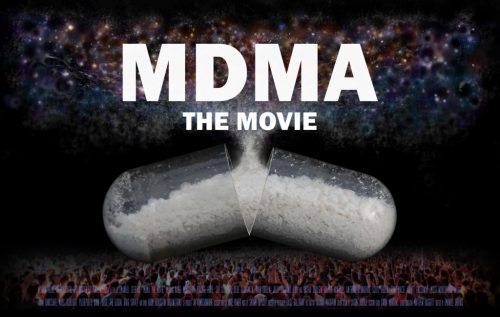
That is why I reached out to DanceSafe Founder and Producer of MDMA The Movie, Emanuel Sferios. Leading the way in the conversation about drugs like MDMA, DanceSafe has been an integral part of the electronic music scene for a long while now. If you haven’t heard of them by now, please visit their website HERE. DanceSafe not only offers information about drugs and drug interactions both on site at events and online, but provides a safe place to purchase testing kits and is helping lead the charge in pushing for drug reform. MDMA The Movie, due out in 2017, is an upcoming full-length feature documentary that explores the history and cultural impact of MDMA while highlighting its medical role in the treatment of PTSD and harm reduction as a practical alternative to three decades of failed efforts at prohibition. Click HERE to support the movie and help them complete their project!
First, can you tell us what brought you into the electronic music scene?
I went to my first rave behind a DanceSafe booth, believe it or not. Before starting DanceSafe, I had actually never listened to electronic music. I was a punk as a teenager in the 80s and then got into indy rock in college during the 90s. I still love guitar-based music today, and have a hard time listening to straight-up electronica, but I do love MGMT and other “cross over” bands that combine electronic sounds with live instruments, and I think that’s really the direction music is going these days… kind a fusion on genres.
So my entrance into the scene was purely professional. But I have to say that music aside, I feel privileged to have become a part of the scene. It’s truly a beautiful subculture. There’s so much love and caring among the participants, especially in the early, underground days, and even still today, although the mainstreaming of EDM is having a negative effect I believe. When you get Justin Bieber making appearances at ULTRA, and you start hearing misogynist lyrics in the music, etc., you can start to see the dominant culture creeping its way in.
Was there a specific moment that you decided to create DanceSafe? How did you start to focus on MDMA specifically?
There was, in fact. It was early 1998 and I was 28 years old. A friend of mine gave me some MDMA, but before I took it I got online to see what science had learned about the drug since the last time I took it, which had been over a decade, about 1987. And back then, remember, there was no internet. I had to go to the library to research the drug. So I was curious what more we knew about it now. Well, what I discovered was really alarming. In the 13 years since it had been banned, the market had become so adulterated that people were dying from fake pills. Mostly it was PMA (para-methoxy-amphetamine) that was killing people, but many so-called “ecstasy” pills, I learned, contained other drugs far more dangerous than MDMA. I couldn’t believe it! Back in 1986 when I first used MDMA, this wasn’t even an issue.
I also discovered that the Dutch government had a harm reduction program where they would set up booths at raves and use this chemical reagent to test pills for people, to help them avoid the fake ones. I had already been a needle exchange volunteer at the time, and so was familiar with harm reduction as an alternative to abstinence-only programs, and I had experience as an activist and community organizer (mostly with the homeless organization, Food Not Bombs), and so I just said to myself at that moment, “I’m going to do this over here.” Within six months I had the website up, the laboratory pill testing program (now hosted by the Erowids at www.ecstasydata.org), and a local Bay Area chapter. Finding out how to manufacture the reagent testing kits took a little bit longer, but by the Spring of 1999 I was producing them myself, selling them from the website, and testing pills regularly for people at raves in the Bay Area.
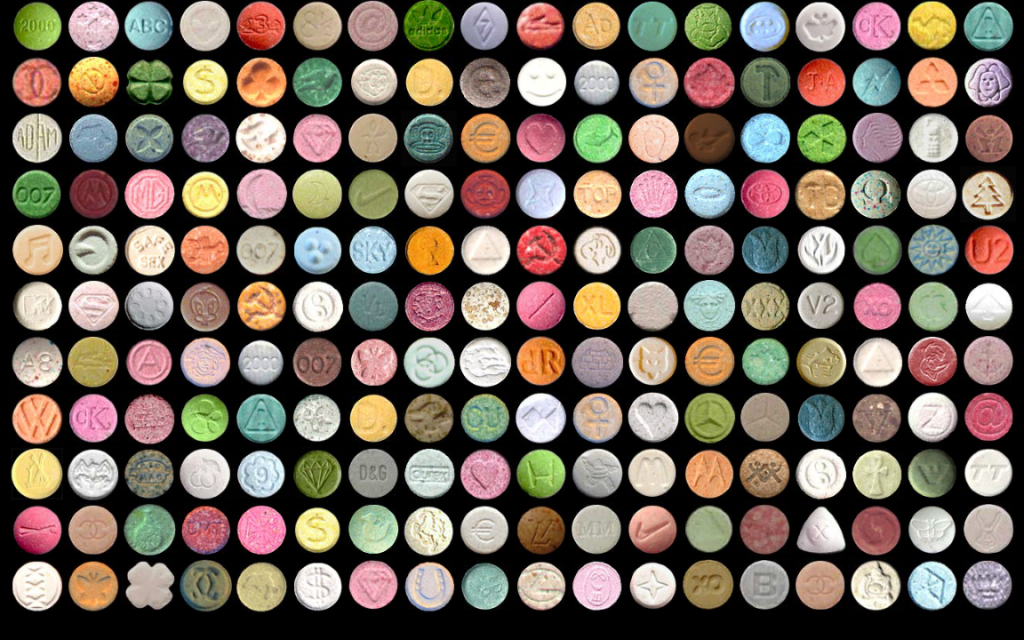
What caused you to start thinking about drug safety in general?
When I first started DanceSafe, I thought of it simply as an MDMA-related harm reduction organization. In fact, the original name was “The Ecstasy Harm Reduction Project” and our website was www.harmreduction.net (I ended up giving the domain name to the Harm Reduction Coalition). The name DanceSafe didn’t come until later. The original idea, really, was simply a response to the adulterated market. It was all about pill testing or drug identification. Prohibition had created a real mess, and I was trying to solve a specific problem.
However, I will never forget the first rave I attended. I saw a young girl, maybe 16 or 17, walking around with a little bottle and tiny spoon dipping some white powder out of it and saying to random strangers, “Bump of K? Bump of K?” I saw other young people lean over and snort this mystery powder off the spoon. These people were total strangers remember, and many of them were clearly high on other drugs. I was shocked, really. I just would never do such a thing. Some of these people didn’t even know what the drug was they were doing, as one girl I remember asked her friend what “K” meant. Now, I wasn’t judging these young people. I was just shocked. I guess I had never really been a part of a “drug culture” before, where drugs other than alcohol were used so openly and indiscriminately. My past psychedelic use had always been very intentional, usually with one friend or a small group at most, where we would go out into nature, etc. I had never witnessed anything like this.
At the same time, I remember my first conversations with young people at the Oakland massives. “Massives” were the biggest events back then, which had maybe 5,000 to 10,000 people. I would ask people from behind the booth what they knew about Ecstasy, and they would look at me strangely and say, “What do you mean? Ecstasy are the little pills that you buy, some of which make you feel good, and some of which make you feel bad.”
“Really?” I would respond. “And what drug does ecstasy contain?” And they would list off a variety of drugs they knew the names of, like heroin, cocaine and meth. Few of these young people had even heard of “MDMA.” These kids (and I use that term with respect and endearment) were consuming pills and they literally had NO IDEA what they were doing. They thought the pills that made them feel good had the better combination of various street drugs in them, and the ones that made them feel bad simply had a bad combination. They kept forking out $20 or more every weekend in the off-chance they would get one of the ones that made them feel good. And they didn’t even know they were getting MDMA!
I remember lying in bed that night (or early morning actually, as I had been up all night working the booth) thinking and thinking and wondering what to do. I remember talking to my wife about what I had experienced. I mean, the situation was worse than I had ever imagined. I thought I had started an organization to help people find the drug they wanted, and I learned that most people didn’t even know what drug they wanted, or even seem to care. It was crazy, and seemed totally irresponsible.
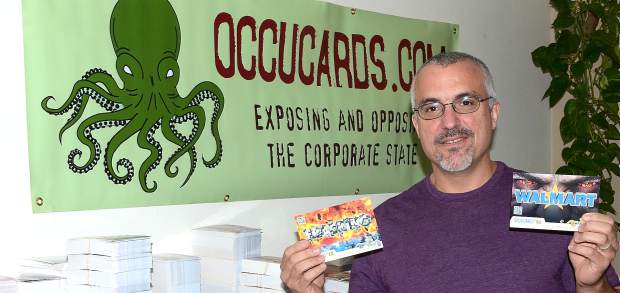
I could almost sympathize with the drug warriors who wanted to stomp out drugs entirely. But what the drug warriors don’t understand is that it is prohibition (and the resulting black market) that had created this situation to begin with. It wasn’t that these young people were self-destructive “druggies” trying to numb themselves or escape life. They were bright kids who loved life, loved their friends, and wanted to have fun. The only reason they didn’t know what drug they were taking is because they had no way of knowing it no matter how hard they tried! A drug warrior might claim here that they just shouldn’t be using drugs in the first place, and look at irresponsible drug use as proof that the problem lies in the person using the drugs irresponsibly, but it was clear to me after talking to so many of these young people that was simply not the case. What one is capable of understanding is based largely on the information available to them, and prohibition was cutting off the information that allowed these people to actually be responsible, to use drugs responsibly.
Rather than blaming them, I decided to get them the information, and to help create a responsible drug culture. So over the next year DanceSafe expanded from a simply ecstasy pill testing service to a full-blown peer-based drug education program, with volunteer-run chapters in 24 cities around the US and Canada. We had non-judgmental safety literature on fifteen of the most popular drugs at the time. I chose “Less Is More” as our motto, because I felt it was non-judgmental but also conveyed a message of moderation. We began a basic education process on drugs, and spread it as quickly as we could around the rave culture.
And to a degree, it worked. And this is entirely due to the amazing volunteers who created or joined chapters around the country. I will forever be awed by the love and true concern for their peers I witnessed from all the DanceSafe volunteers I had the opportunity to meet on those early days, and even still today. I may have had the original idea for DanceSafe, but the organization was made entirely by them.
Emanuel’s first short film on MDMA Therapy:
Can you elaborate on some common misconceptions about MDMA?
The greatest misconception of all is that MDMA is a “hallucinogenic amphetamine.” This misconception is probably believed by most people who haven’t taken the drug. It’s even promoted by NIDA and other government agencies if you go to their websites. Part of the reason is that it’s hard to fit MDMA’s subjective effects into other known drug categories. If someone has never taken MDMA, how would you describe it to them? You could say it makes you feel “happy,” but that’s kind of generic. You could use the word “euphoria,” but that’s also generic, and that label is used for lots of other drugs too, drugs with very different effects. Communicating the unique, empathogenic effects of MDMA is difficult, and they certainly don’t fit into any previously known drug category. So what happened was that the DEA and NIDA back in the mid 80s simply looked at the chemical structure of MDMA, which kind of looks both like mescaline as well as amphetamine (as do many phenethylamines). So not knowing the effects, they just said it was a hallucinogenic amphetamine. Perhaps you couldn’t blame them back then. I mean, what did they know at the time? But now we’re thirty years later and they still claim this, and this misconception then gets picked up and repeated by other supposed authorities, like law enforcement agencies, toxicologists, teachers and drug counselors, etc.
The adulterated, criminal market also contributes to this misconception. In fact, the situation today is far worse than it was when I began DanceSafe. The sheer number of new psychoactive substances (NPSs) being sold as “Ecstasy” or “Molly” is incredible, and many of these actually are hallucinogenic stimulants. The biggest problem has been the influx of cathinones (a.k.a., “bath salts”). These are a new class of stimulant drugs that are derived from the African Khat plant. The most common one being sold as “Molly” is methylone, and the thing about methylone is that, well, a lot of people like it. It’s a broad-based monoamine reuptake inhibitor, quite different from MDMA, which is a selective serotonin releaser, but nonetheless a lot of people tend to enjoy its effects. The problem arises because people believe they’re taking MDMA when they are not. Why is this a problem? It’s a problem because a normal dose of methylone is double or triple that of MDMA, and with methylone you can redose throughout the night and take it multiple days in a row. You simply can’t do this with MDMA. This has to do with how the drugs work pharmacologically. With MDMA, once you release your brain’s serotonin, you simply have to wait (a week or two depending on diet and genetics) until your brain replenishes it before you can take more and have the same effect.
But methylone is more like a classic stimulant. Dosing behaviors around it are completely different, yet people think they’re taking MDMA, and this is problematic and quite dangerous. It’s actually something I address prominently in my upcoming film, as I believe the confusion between methylone and MDMA is partially responsible for the increase in fatalities we are seeing. Back when I started DanceSafe 18 years ago, deaths related to MDMA were about 3-4 per year in the US. Now that number is 15-20, and part of the problem is that people are taking huge doses they never used to before, because dosing patterns are being established by methylone rather than MDMA. Once again it’s prohibition and the resulting lack of open dialogue, along with the inability of people to identify the drugs they want to consume, that are responsible for this. We really need—as a society—to look closely at how our drug laws are creating a far more dangerous situation than there needs to be.
What are your top tips for being safe at festivals and events?
The most important thing to remember is to stay hydrated and cool. Heat stroke is the biggest risk at both summer festival as well as crowded indoor events. And stimulant drugs increase the risk of heat stroke, and so does MDMA. Most MDMA-related fatalities result from a combination of the drug with a hot environment. So people need to be careful.
Know what drugs you’re taking… of course. And if you are taking MDMA, don’t take it more than one night. It won’t work that well the second night anyway (because your serotonin is depleted), and taking it two nights in a row greatly increases your risk of having a medical emergency. Don’t snort it. Don’t take more than 125 milligrams if it’s your first time or if you’re not sure what dose works for you. Don’t redose more than once, and if you do redose, take half of your original dose. Remember, if are feeling bad when you come down, taking more will not always make you feel better. It might the first time, but with MDMA the law of diminishing returns arrives quickly, and you are more likely to get into trouble (and feel crappy the next day) if you take too much. In general, remember that less is more when it comes to MDMA.
Also, have an intention if you choose to use drugs. Even if that intention is to feel good and have fun, state that intention out loud, to yourself and your friends, before you consume your pill. People get into problems with drugs when they don’t really know why they are using them. On any given night, if you know why you want to use a particular drug, then you are acting consciously. Then you will be more able to know if anything starts to become hairy. Also, ask your friends how they feel regularly. It’s often easier to be aware of your friends than yourself when you are high, so take are of each other.
Can you tell our readers a bit about MDMA The Movie?
MDMA The Movie is the working title for a documentary film I’ve been working on over the last few years. When it’s released, it might end up having a different name, but that’s what I’m calling it for now.
I decided to make this film when I realized that it had been almost thirty years since MDMA was banned, and nobody had produced a comprehensive and truthful documentary on it. To me this was incredible. I mean here we have the second most popular drug after marijuana for people under thirty, a drug that has positively transformed the lives of millions of people around the world, and yet a comprehensive film simply hadn’t been made. Why, I thought? After pondering this question it occurred to me that one of the reasons was that people had a difficult time reconciling the profound therapeutic benefits produced by MDMA with the fact that many people abuse the drug and many people have even died after taking it. What is MDMA? Is it a medicine or is it a party drug? What I concluded was that this was a hard egg for most people to crack, and that nobody had yet been willing to address this seeming contradiction.
If you look at the documentaries that have been made about MDMA—from both mainstream journalists like Peter Jennings to online VICE productions to amateur YouTube videos—what you get is one of two things. You get docs on MDMA’s medical use that ignores or even criticizes recreational use, or you get rave culture docs with shallow coverage of recreational use that completely ignores the medical use. In many ways this reflects the different identities of the film makers and their chosen subjects. A lot of people come from the psychedelic therapy community. These folks are psychologists and therapists who recognize the healing quality of psychedelic substances. Then you have the “psychonauts” or “inner explorers” who consider MDMA and psychedelics to be sacred substances, and who use them ritualistically and with more spiritual intentions. Then of course you have the rave or EDM folks, some of whom appreciate the cultural influence of psychedelics in the scene (like the film Electronic Awakening), and others who look at the drugs as problematic or as a liability to the scene. But anyway you cut this cake, you are only getting a small slice of things, and the harm reduction element isn’t there anywhere.
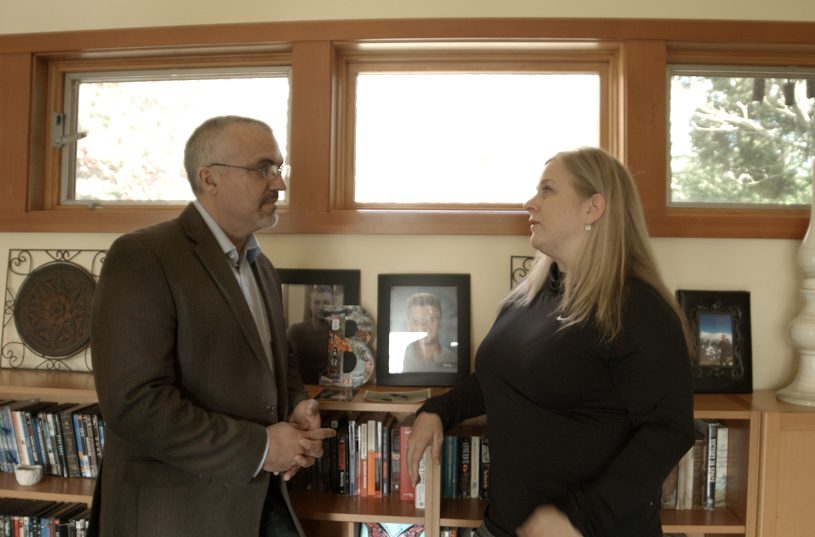
What sets me apart is that really I don’t fit into any of these sub-cultural identities. I got into the scene as a harm reduction activist, as an outsider. I also used MDMA therapeutically as a teenager, and it really transformed my life positively. So I have personal experience with the therapeutic use of the drug on the one hand, and I have a long history on the harm reduction side too. So perhaps I’m more able than most people to reconcile the therapeutic benefits of MDMA with the risks and dangers of its recreational use. And perhaps that’s why I’m the one making this movie. I don’t know. I don’t really know why it hasn’t already been made. I just know it’s long overdue.
I’ve also learned a lot about film making over the last two years. I’ve never made a film before, but I knew from the start I wanted to make an award-winning film (we’ll see if that happens). This means I wasn’t just going to go out and buy a camera and start interviewing people. I realized I had to hire professionals, and I had to really really put time into this. My goal with this film is two-fold. First, I want to make a film that changes the public conversation about MDMA, and really about drugs in general. This is going to primarily be a drug policy reform documentary. We need to acknowledge that the drug war is not just an abysmal failure, but that it is single-handedly responsible for the the vast majority of drug-related deaths. I’m not just talking deaths from crime and trafficking activity. I’m talking overdoses too. Prohibition is also responsible for addiction. Read Gabor Máte’s book, “In the Realm of Hungry Ghosts” to see what I mean. It’s the judgment and stigma we put on people who use drugs, and the way we treat them as a culture, that causes the very misuse and abuse of drugs that the drug warriors pretend they are solving. This is not to say there would be no addicts or deaths in a post-prohibition world. Of course there will always be people who get in trouble with drugs, but after two decades of work in harm reduction and drug policy, I am 100% sure that the majority of addiction and drug fatalities are directly related to prohibition and drug war culture. If we want to save lives, we need to end this madness.

So that’s the first thing I want to do with this film. I want to show the madness of the drug war from the perspective of MDMA. Because when you think about it, here we have a drug that removes the very shame, stigma and self loathing that is the driving force of the drug war to begin with. Right? The drug war is largely a result of the projection of “otherness” onto those we don’t understand. Look at the words used. “Druggie.” “Junkie.” “Crack head” Etc. But MDMA users are rarely if ever self-destructive. The drug tends to lift people up and bring the best out of people. It has actually helped thousands of people recover from addiction. So to the degree that the general public simply has the wrong idea about drugs and drug users, there’s no better drug to show this misunderstanding than MDMA. People are dying. Not many compared to other drugs, but what does that matter? If we can help save one life we should, right? And so I want this movie to be a part of the reform movement that I’ve spent so much of my life in. I want this film to honor not just the families I’ve worked with who have lost loved ones after they took MDMA, but the millions of others who have lost loved ones to heroin, cocaine and also drug war violence.
And secondly, I want this film to honor MDMA, a beautiful, healing drug that puts many people who take it in touch with their higher self. A drug that teaches us about love and self acceptance. A drug that produces compassion and empathy in a majority of people who take it. How do you do this in a mainstream film where you know most people watching it have never taken it? How do you honor a drug even as you tell the stories of young people who have died after taking it? This will be a challenge, but these contradictions—I believe—are also what will make the film authentic. It’s the truth, and it’s the poetry. Nothing is black and white, and if we can learn to see the beauty of grayness, we will all be better off.
What are some ways for people who want to get more involved with MDMA The Movie?
Well right now we are in the middle of our second crowdfunding campaign. We raised $50,000 during the first one about a year ago, and we’ve raised over $13,000 so far during this one. But we need to raise $37,000 more in order to finish production. So the most helpful thing right now is for people to donate to the film. We also have a private investor offering, and have raised $75,000 already in investment funds. Investors need to be accredited, which essentially means fairly wealthy, but if anyone reading this knows anyone with deep pockets who might be interested, please send them our way.
Click HERE to support MDMA The Movie and help them complete their project!
Connect with MDMA: The Movie on Social Media:
Website | Facebook | Twitter | YouTube




